Brand Refresh vs. Rebrand—What’s the Difference
If your company has been in business for some time, you’ve probably heard the terms “rebranding” and “brand refresh” thrown around. But what do they really mean? And more importantly, which one might your business need? Let’s break down these two brand strategies and see if you need one of them to help breathe new life into your business.
Table of Contents:
- What Is Branding and Why Is It Important for Your Business?
- What Is Rebranding?
- What Is a Brand Refresh?
- Rebranding vs Brand Refresh
- Real-World Examples: Brand Refresh vs. Rebrand
- Which One Do You Need?
- Contact Our Marketing Agency for Your Brand Refresh or Rebranding Needs
What Is Branding and Why Is It Important for Your Business?
Your brand is like your business’s personality – it’s how people recognize you, remember you, and feel about you. It’s not just your logo or your colors; it’s the whole package of what you stand for and how you present yourself to the world.
In today’s ever evolving market, you have to stay relevant. That’s where rebranding and brand refreshes often play a role. They’re tools to keep your brand looking modern and feeling fresh.
What Is Rebranding?
Rebranding is like giving your business a complete makeover. When you rebrand, you’re essentially creating a new identity for your company. This can include changes to your:
- Name
- Logo
- Color scheme
- Brand voice
- Mission and values
- Target audience
Why Would You Rebrand?
Rebranding is a pretty big undertaking, but there are several good reasons to consider a rebrand:
- Major company changes: Maybe you’ve merged with another company, or your business has evolved so much that your current brand doesn’t fit anymore.
- Shift in Business Focus: To reflect changes in the company’s offerings, mission, or target market, ensuring the brand stays relevant to its core audience.
- Entering new markets: If you’re expanding globally or into new demographics, your current brand might not resonate with your new audience.
The Pros and Cons of Rebranding
Rebranding can be exciting, but has a number of important considerations. Let’s take a look at the pros and cons:
Pros:
- Opportunity to redefine your business
- Can help you stand out in a crowded market
- Chance to connect with new audiences
Cons:
- Expensive and time-consuming
- Risk of alienating existing customers
- Potential loss of brand recognition
What Is a Brand Refresh?
A brand refresh is less dramatic than a full rebrand but can still make a significant impact. With a brand refresh, you’re updating and refining your existing brand elements, not completely overhauling them. This might include:
- Tweaking your logo
- Updating your color palette
- Refreshing your website design
- Adjusting your brand voice
When Might You Need a Brand Refresh?
Brand refreshes are perfect for when you want to:
- Modernize your look: Keep up with design trends without losing your core identity.
- Slight market repositioning: Adjust to market changes without a complete overhaul.
- Maintain relevance: Stay fresh in the minds of your customers.
- Celebrate milestones: Mark significant company anniversaries or achievements.
The Upside of a Brand Refresh
Brand refreshes are generally less risky than full rebrands. They allow you to:
- Update your look without losing brand recognition
- Stay current with design trends
- Reaffirm your brand’s core values
- Excite your existing customer base
Rebranding vs Brand Refresh
Scope of Changes
- Rebranding: Major changes that might make your brand look completely different from its previous version. It generally means you want to change the perception of your brand, and likely target a larger group of customers, if not a completely different group of customers.
- Brand Refresh: Minor changes that slightly alter how your brand is perceived. It often is simply a way to modernize your brand’s look or enhance certain aspects of your existing brand.
Cost and Resources
- Rebranding: Usually a significant investment. You might need to update everything from your signage to your packaging.
- Brand Refresh: Generally more budget-friendly. You’re making tweaks, not starting from scratch.
Time Frame
- Rebranding: Can take months or even years to fully implement.
- Brand Refresh: Typically quicker, often completed in weeks or months.
Impact on Brand Equity
- Rebranding: Higher risk of losing established brand equity, but also the potential for significant gains.
- Brand Refresh: Aims to build upon existing brand equity rather than replace it.
Real-World Examples: Brand Refresh vs. Rebrand
Rebranding Examples
1. Dunkin’: Dunkin’ Donuts has been around for decades. However, in 2019, they dropped the “Donuts” to become simply “Dunkin’.” This rebrand reflected their expanded menu and focus on beverages beyond just coffee.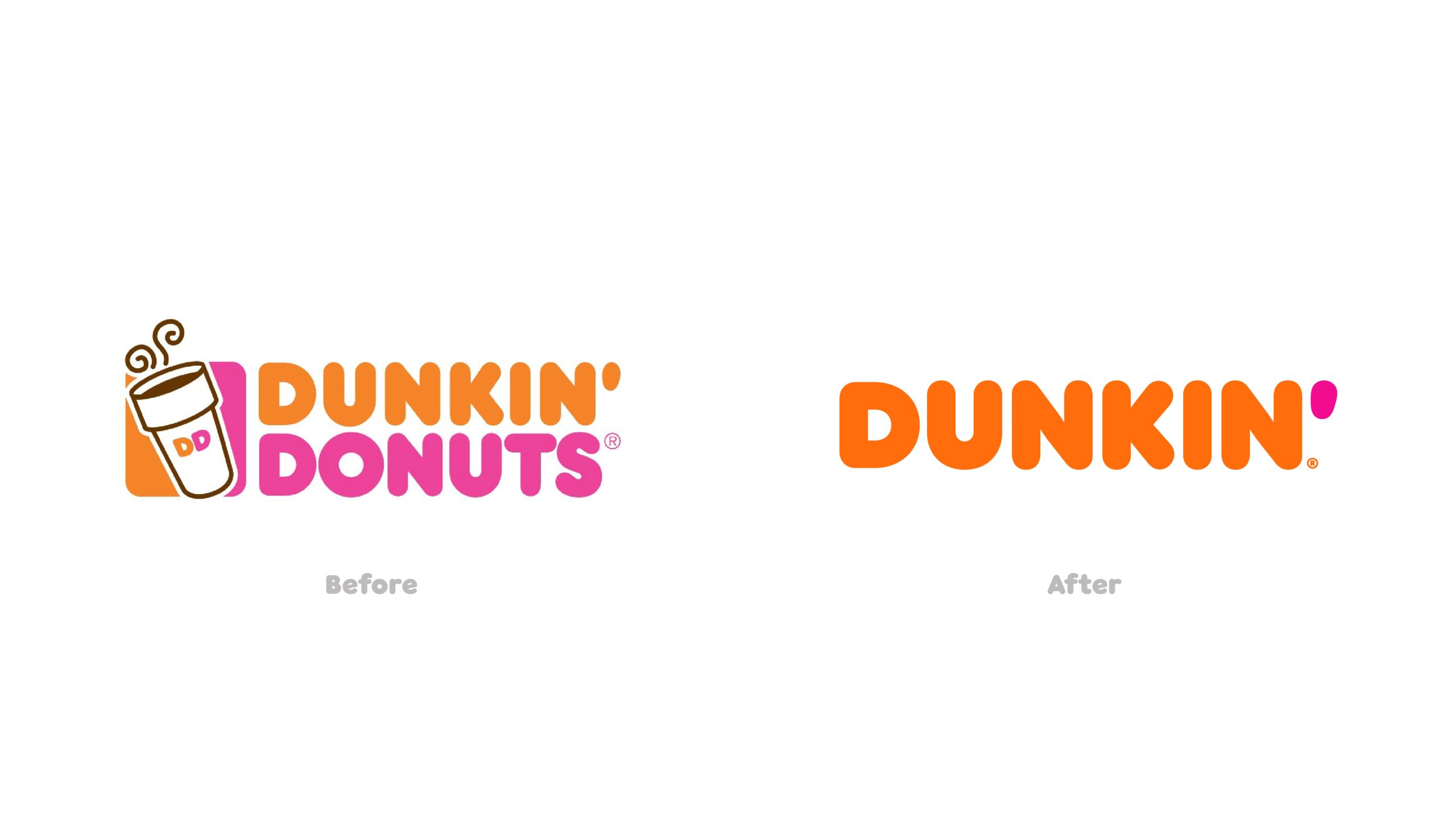
2. Facebook/Meta: After creating separate branding for the Facebook parent company and the Facebook social media website in 2019, the parent company changed its branding from Facebook to Meta in 2021. This reflected a strategic move to innovate beyond social media, emphasizing immersive digital experiences and future technology.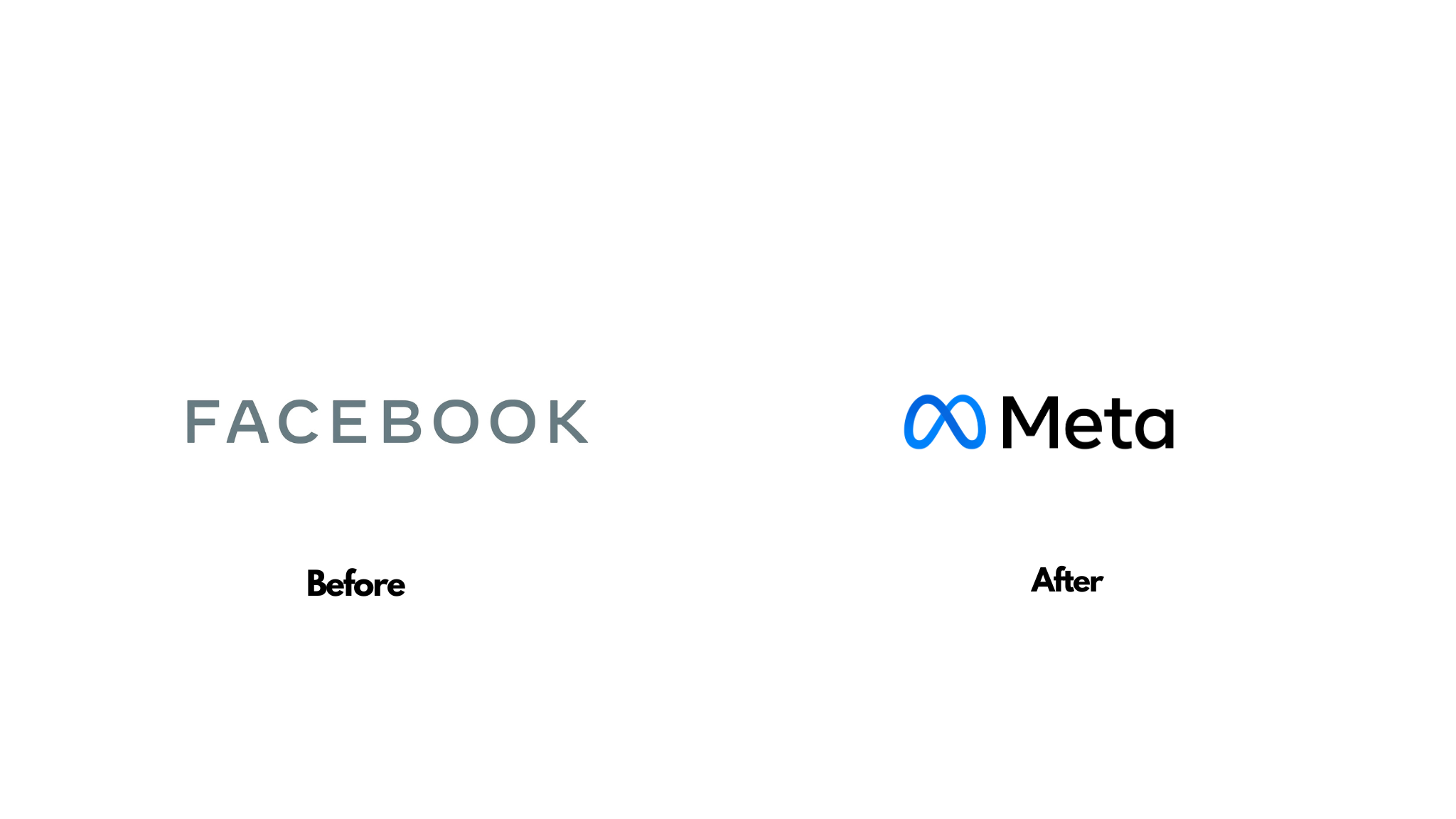
3. Jaguar: In 2024, Jaguar unveiled a complete rebrand with a new logo, typography, bold colors, and brand philosophy. This was designed to leave behind their traditional past and position them as a more modern company that is culturally relevant for the future.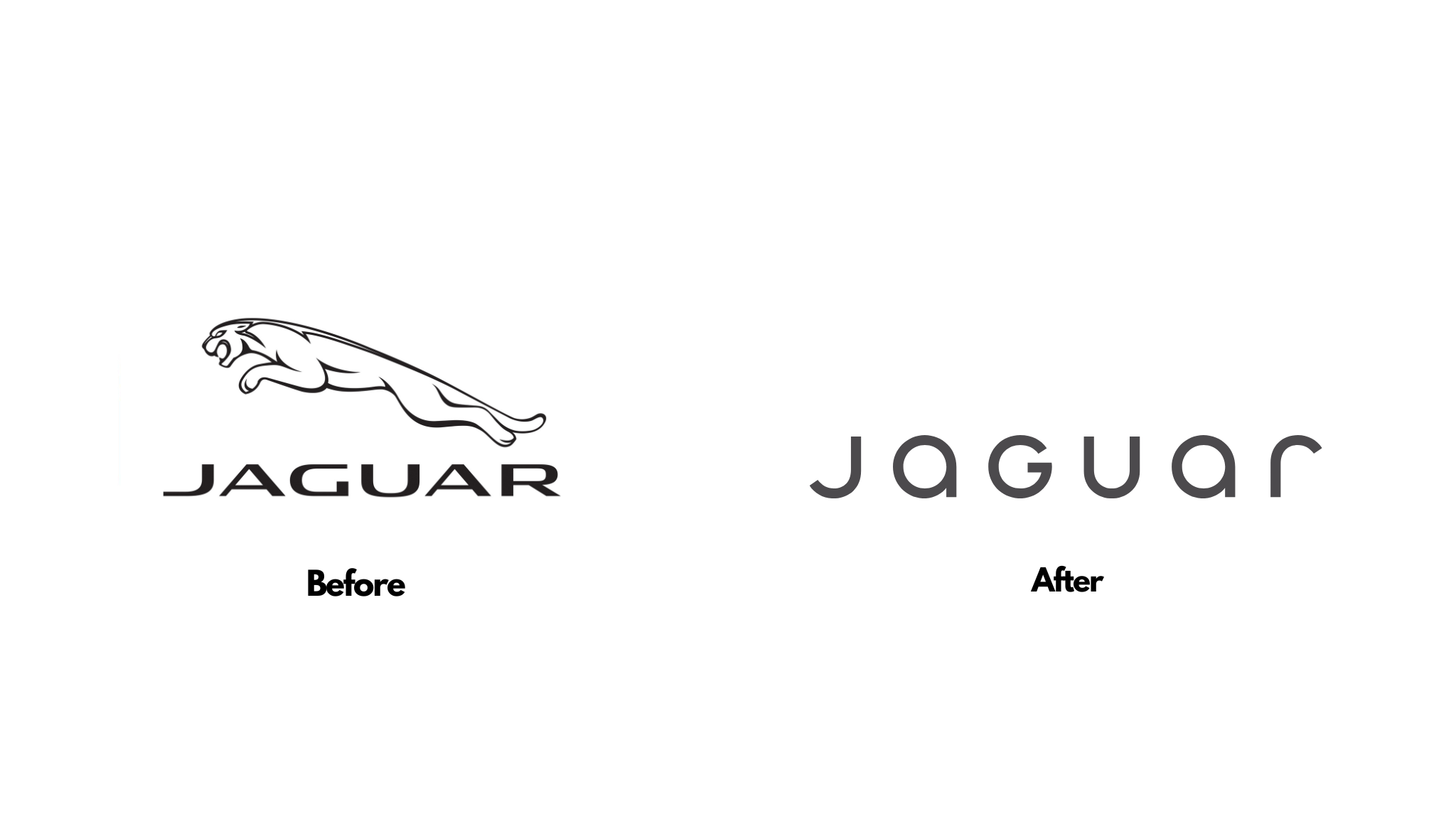
Brand Refresh Examples
1. Starbucks: In 2011, Starbucks simplified their logo by removing the text and focusing on the iconic siren. This refresh maintained their brand recognition while giving them a more modern, versatile look.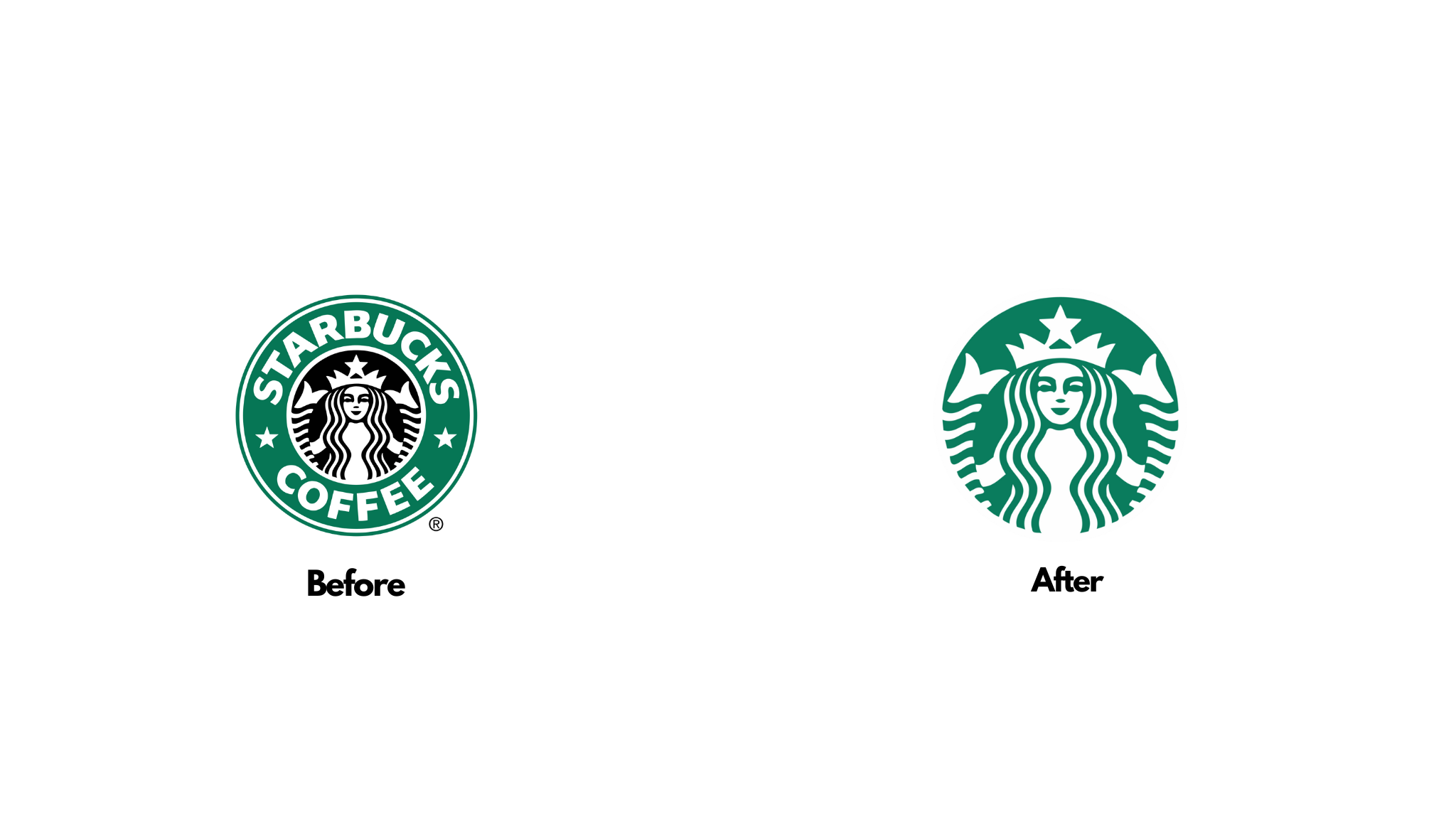
2. Mastercard: Mastercard’s 2016 brand refresh introduced a cleaner, modern logo emphasizing its iconic interlocking circles while simplifying its design for digital platforms. In 2019, the brand further evolved by removing its name entirely, reinforcing global recognition through its bold, minimalist identity.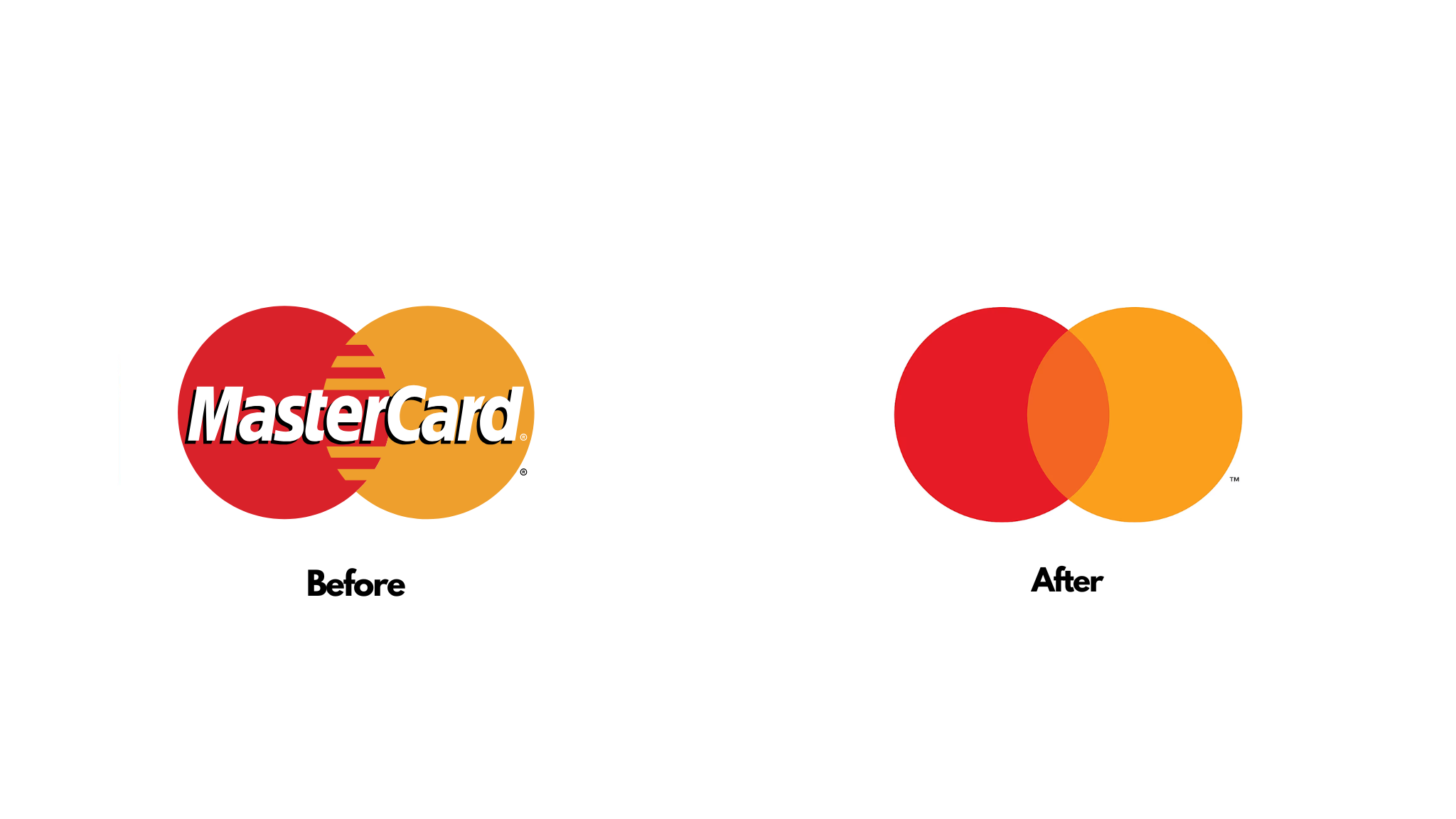 3. Southwest: In 2016, Southwest Airlines unveiled a brand refresh that dropped the plane icon, featured a more rounded and lowercase font, and added a heart as punctuation that maintained its brand colors. The redesign feels friendlier and emphasizes their message that they’re the airline with heart.
3. Southwest: In 2016, Southwest Airlines unveiled a brand refresh that dropped the plane icon, featured a more rounded and lowercase font, and added a heart as punctuation that maintained its brand colors. The redesign feels friendlier and emphasizes their message that they’re the airline with heart.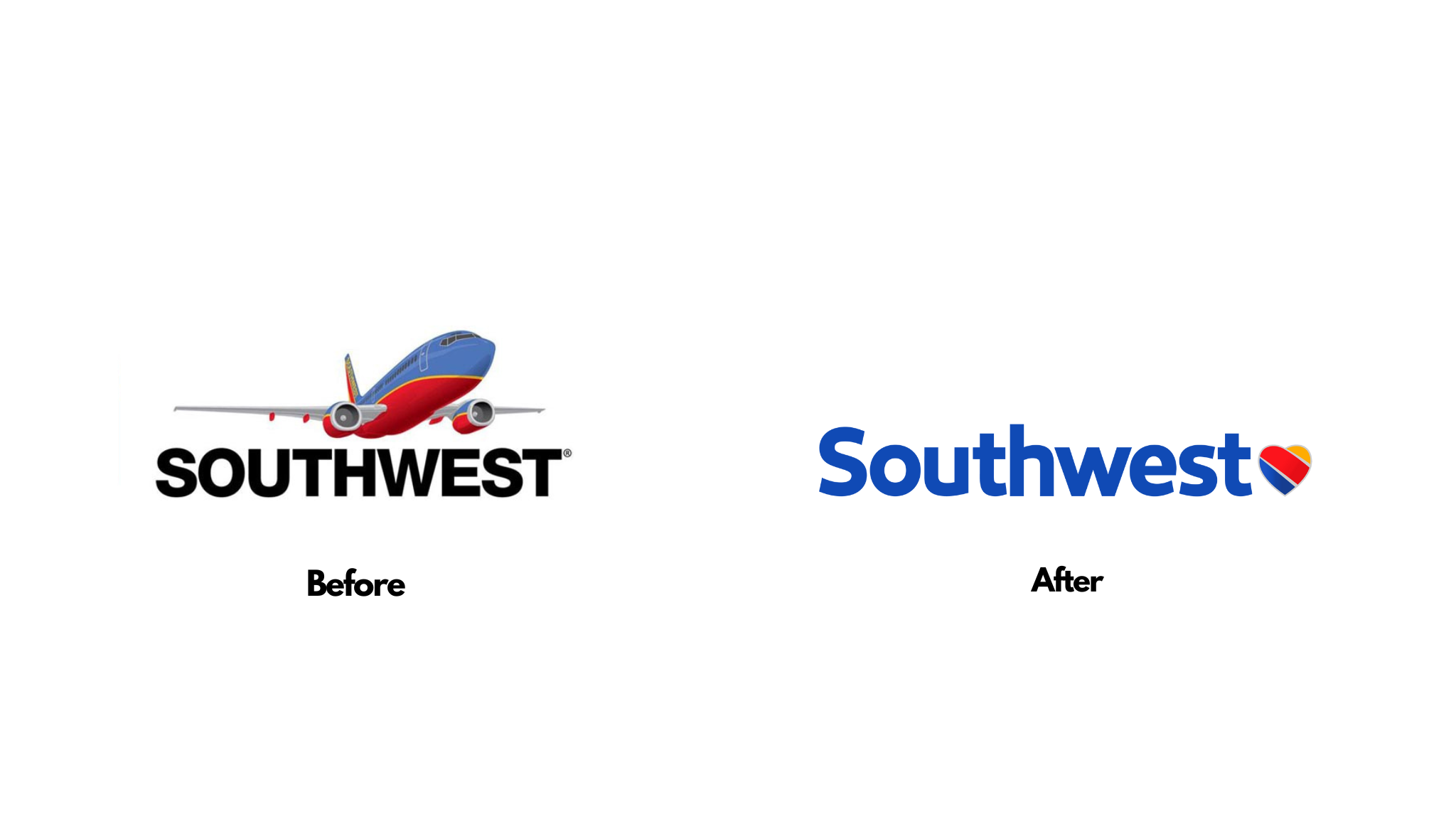
Which One Do You Need?
Choosing between a rebrand and a brand refresh depends on your specific situation. Here are some scenarios that can help you decide which direction you should go in.
When to Consider Rebranding
- Your business has undergone major changes (merger, acquisition, new direction)
- Your current brand is associated with negative perceptions
- You’re entering completely new markets or targeting a very different audience
- Your brand feels outdated and no longer reflects your company’s values or offerings
When a Brand Refresh Might Be Enough
- Your brand still resonates with your target audience, but feels a bit stale or outdated
- You want to stay current with design trends
- You’re expanding your offerings but staying within your core market
- You want to generate buzz without a complete overhaul
Tips for a Successful Brand Evolution
Whether you’re rebranding or refreshing, here are some tips to ensure success:
- Conduct Research: Understand your market, your competitors, and your customers before making any changes.
- Stay true to your core values: Even with a rebrand, maintain the essence of what makes your company unique.
- Communicate clearly: Let your customers know what’s changing and why. Bring them along on the journey.
- Be consistent: Ensure all your brand touchpoints reflect the new or refreshed brand.
- Monitor and measure: Keep track of how your rebrand or refresh is received and be prepared to make adjustments.
Contact Our Marketing Agency for Your Brand Refresh or Rebranding Needs
Whether you go for a full rebrand or a subtle refresh, remember that your brand is a vital part of your business. It’s how you connect with your customers and stand out in the market. Don’t be afraid to evolve, but it must be done strategically.
Whether your brand is due for a refresh, or a full rebrand, contact COLAB marketing agency and we’ll make sure it aligns with your business goals and resonates with your target audience.